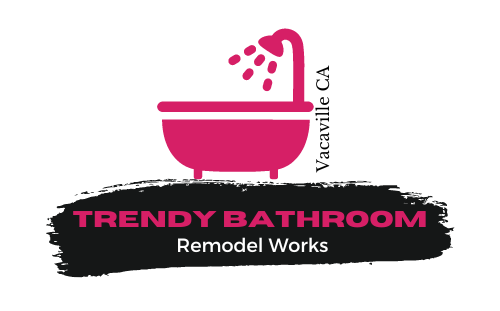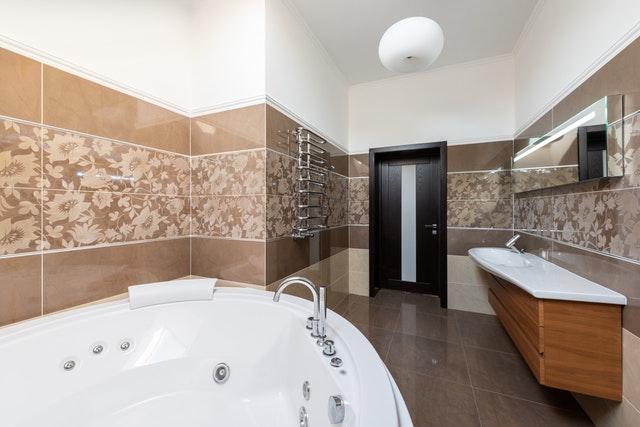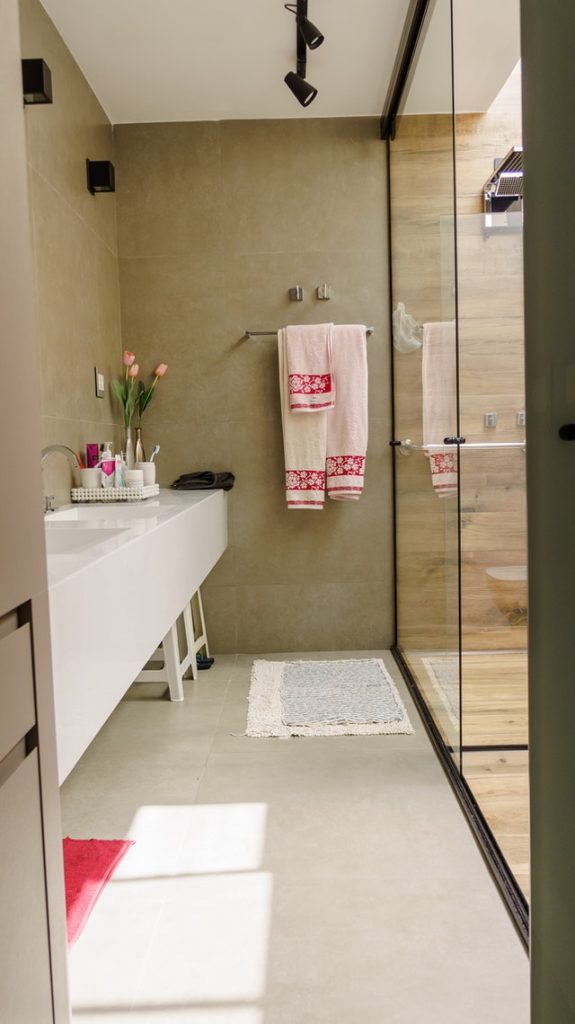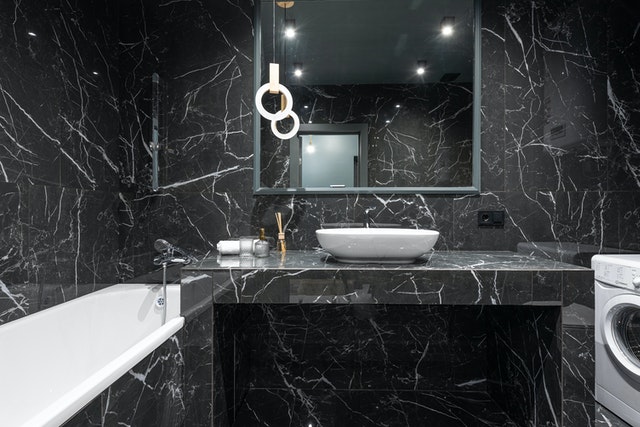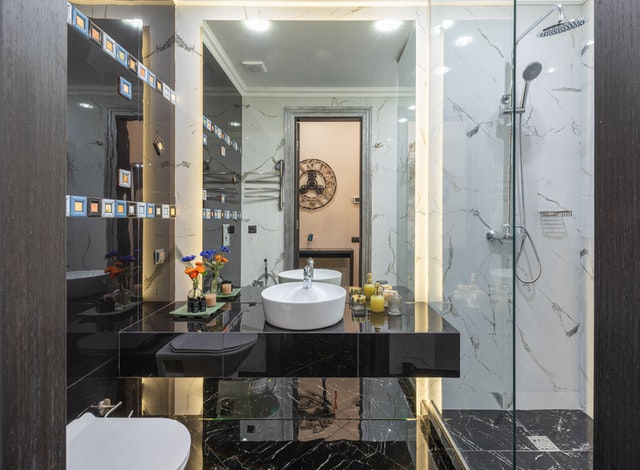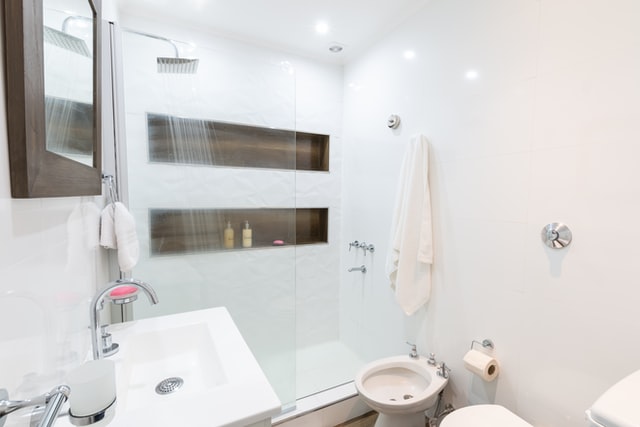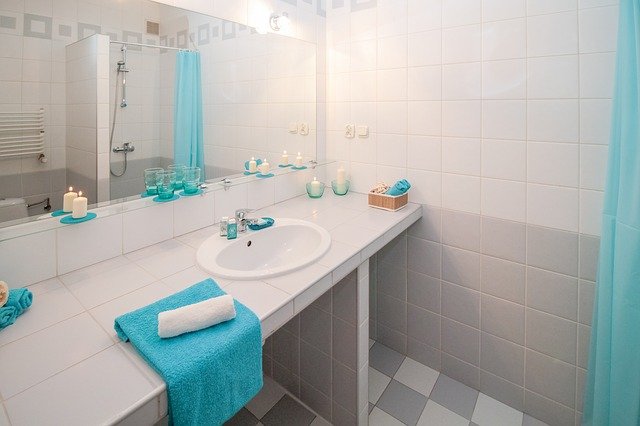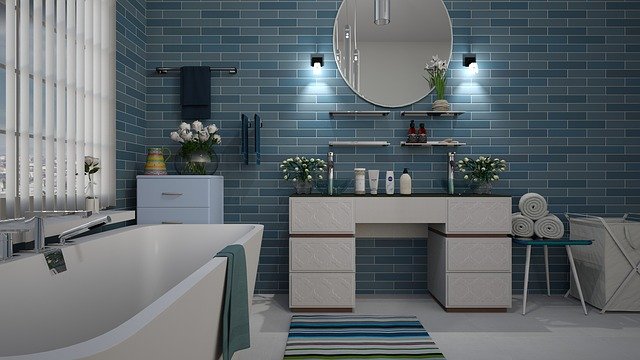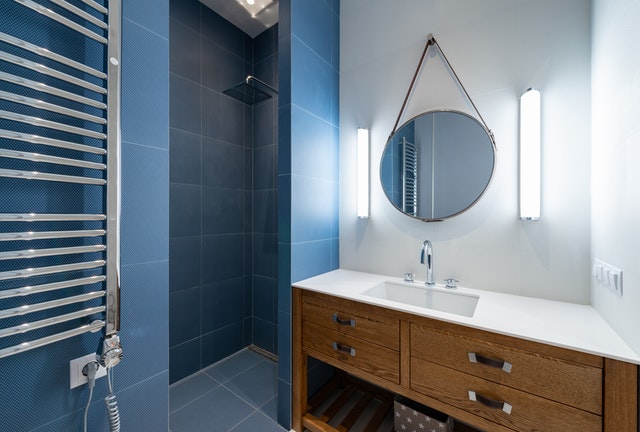The Family Bath
The Family Bath
This is an excerpt from the Book called “A Guide To Design And Renovation” by Steve Thomas And Philip Langdon. Continue reading to learn more about The Family Bath, thanks to the author.
It is within our parents’ lifetime that many American families did not even have a bathroom in their homes. The “bath” referred to that elaborate Saturday afternoon ritual during which the whole family cleansed themselves with sufficient assiduousness to last the coming week. In the 1920s a number of American families owned an automobile but not a bathtub.
These days the bathroom is almost as central to the life of a family as the kitchen. Most of us expect to bathe at least once a day, and we also expect to perform our prework or pre-evening –on the- town ablutions in the privacy our own bath. The number of bathrooms in American houses has not been pinned down with any precision by the census, but it most likely exceeds 150 million, meaning that there are about 50 million more bathrooms in the United States than there are houses and apartments.
I am the oldest of six children. For most of my children my family lived in variety of houses that were too small for us. Usually, the boys shared one bedroom, the girls another, and my parents the third. Many of our houses had only one bath sometimes two so the “family bath” was literally that: the bath serving the whole family. While most houses these days have more than one bath, the family bath is still they paradigmatic bathroom, a room that is likely to be used by everyone in the family.
The family bath illustrated here embodies some of the basic principles of bath design, construction and materials which are:
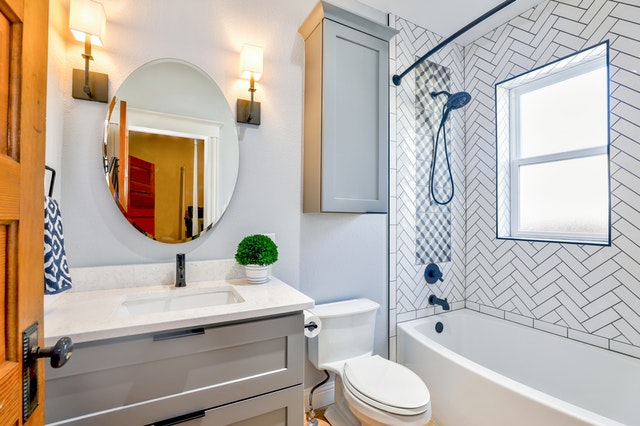
- Versatility: The room must serve variety of uses, from bathing children to accommodating visiting guests.
- Durability: All materials must be selected for long life, have good but neutral looks, and be able to stand up to hard use.
- Serviceability: The room must be easy to maintain
- Compactness: In most houses space is an issue, so the family bath cannot be any larger than it needs to be.
- Storage: There should be as much storage as possible, either in the bath itself or in the general vicinity for towels, line, medicines cleaning supplies and children’s bathtub toys.
All of this amounts to a tall order considering that many of the requirements are mutually contradictory. The famous American naval architect John Alden is said to have asked his clients to list every tool spare part, and kitchen utensil they planned to stow aboard before he would set about designing the interior of their new yacht. Renovating a bathroom is much the same-space is finite and every square inch must be used to its full advantage.
Storage
You, like Alden’s clients might start your design process by making a list of all the things you keep in the bathroom (or would like to keep if you had the space): towels, toilet paper, cosmetics, soap, medicines, mouthwash, toothpaste, tampons, hair dryer, curlers, and so on. Expecting your storage needs to be adequately served by a free standing chest of drawers just isn’t realistic. The most efficient of storage is to build it in.
The prime storage area is in the vanity. It is also the lavatory and the vanity cabinet that make one of the major design statements in the room. A vanity just large enough to house the lavatory is what one typically sees in bathrooms, but since this cabinet must also house the feed and waste pipes for the sink, organizing the storage below is usually a bit of a problem. Often, the best solution for storage is to build the lavatory (or lavatories) into wall-length run of base counter. A pedestal sink is usually a poor choice for a family bathroom, since it completely eliminates any potential for storage.
Kitchen and bath design Glenn Berger likes to make even more room by keeping the compartment beneath the lavatory, as narrow as possible, while allocating maximum space to drawers. In his own house, he put only two small doors but ten drawers in a 6-foot-long vanity. If you have small children, he recommends equipping some drawers, but not all, with locks. “If there’s one drawer and it’s locked, you’ve got a frustrated child, “he claims (from experience). But if you have ten drawers and only six are locked, he’ll be delighted to find the four that operate.”
You will, of course, want mirrors above the sink and above any other area where applying makeup is done. Keep in mind that mirrors, while not cheap, are a very efficient way to increase the illusion of space in the room. In the family bathroom of my own house, I extended the counter in a narrow shelf over the toilet and filled the space above the counter with mirrors. While the room is of minimal dimensions (6 x 9 feet), one never feels cramped.
For shaving, putting on makeup, or primping it is essential to be able to get close-up frontal and profile views of one’s face, so locating a mirror to one side, perhaps on the door to a medicine cabinet, is a good strategy. A full-length mirror is also handy, although finding space for it inside the bath is usually impossible. Perhaps one could be located on the outside of the bathroom door or in an adjacent hall.
Since several people are likely to use a family bathroom, it’s a good idea to have plenty of hooks or bars for towels and wash cloths, some of them within reach of the tub or shower. These accessories come in a profusion of designs, colors, and levels of quality. When making your selection, remember that, when installed, they make a big design statement in and of themselves, so choose carefully. If you select metal, it should be good quality chrome, brass, or stainless. Some nicely designed and very colorful plastic accessories are on the market now, too. These accessories will be on display for a long time, so it’s worth paying the price to get materials that will retain a handsome finish.
Tubs And Showers
Another fixture with big visual impact is the tub and shower. In our concept bath, we chose a combination tub and shower simply because that combination offers the greatest versatility at the least cost.
Tubs and tub-shower combinations are available in several materials. The traditional one is cast iron; it is durable and very smooth with a baked-on porcelain finish that will look good for many years. Cast iron does have some disadvantages. It is a very hard material and is unforgiving if one happens to fall in the shower (although the bottoms of the new tubs are etched with an excellent, nonskid finish). Cast iron is a good thermal conductor, which means that in winter is cold and draws the heat out of the hot water in the tub. It is heavy and therefore difficult to install, and the joint between the tub and the shower surround must be carefully caulked to remain watertight.
Yet for cast iron’s disadvantages, it is so durable as to be considered permanents, and in a family bathroom where sandy children and muddy dogs will be washed in the tub, it is the material of choice.
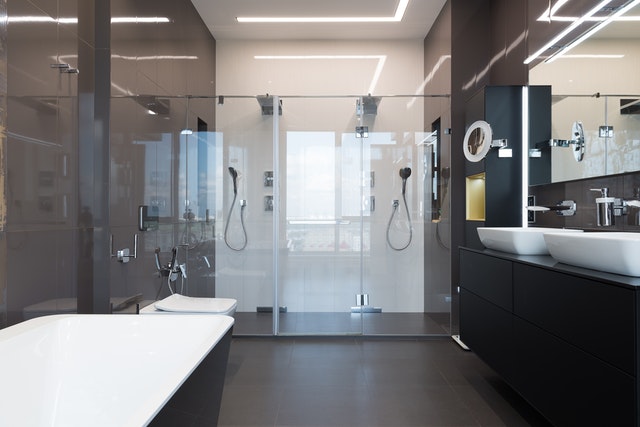
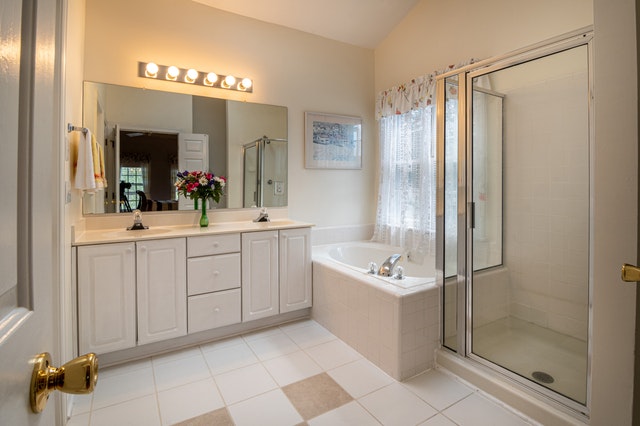
There are steel tubs on the market, but they are not recommended, as they chip, dent, may deform under the weight of water and bather, and may rust through at the drain and faucet holes. However, a new type of steel tub has been developed wherein a high-quality steel shell is coated with baked-on porcelain, giving it the appearance of a cast-iron tub. The steel skin is backed by a lightweight epoxy, which makes them light but rigid. The thermal properties of the epoxy are such that water stays warmer in the tubs. Installers love them because they combine high quality with ease of installation. These units are an excellent alternative to cast iron.
Acrylic and fiberglass tubs, many offered as one-piece models with integral shower surrounds, have become increasingly popular in recent years. They cost significantly less than a comparable cast-iron or epoxy-backed steel tub, especially considering the additional cost of a ceramic-tile surround. Fiberglass is softer than cast iron or steel, a quality that would be welcome in the case of a fall, and also lighter and therefore easier to install. Plastic is a better insulator than metal so is warmer to the touch. The one-piece tub-shower units have no seams to leak and most have fairly gentle, easily cleaned contours.
Plastic tubs have two disadvantages. The first is that they are not as durable as cast iron. The second point is purely aesthetic: some people want the look of cast iron and tile, which is perceived as higher quality than fiberglass or acrylic. They also like the solid feel of these materials in contrast to flexible plastic. If you plan to sell your house in the next several years, these may be considerations.
In my own house, I chose cast-iron tubs with ceramic tile surrounds. Because it is an old historic house, I didn’t feel that fiberglass suited the style of the building. Also, I had my eye on future resale value. However, I have nothing against the plastic tubs and in a family bathroom the will see moderate to light use, they provide an alternative. No matter what material you choose, make sure the tub has a good nonskid texture.
Shower Doors And Curtains
For showering in the tub, you will need some way to keep the water contained, and for this purpose you have two alternatives: a shower curtain and a shower door. Each, naturally, has advantages and disadvantages. Shower doors are available in many styles, sliding or folding, and range in price from a couple of hundred to more than a thousand dollars. To provide a foolproof barrier to water splashing on the floor and walls, one merely has to close a shower door-a shower curtain must be deliberately drawn and placed to provide a good seal. Some sliding doors can be lifted out of the track for cleaning, an attractive feature.
On the other hand, the installation of a shower door does little to make the tub enjoyable for bathing, whereas a shower curtain can be drawn fully out of the way. Also, the presence of doors makes cleaning the tub and shower area more difficult. Since most doors slide on a track installed on the top rim of the tub, leaning over the track to wash small children—or the tub itself—is a nuisance.
For my own family bathroom, primarily used by children and occasionally by guests, I installed a shower curtain. At some later date, when my son can shower himself, I will install a shower door.
Tub And Shower Controls
Renovation offers you the opportunity to change form a dual-lever control system for the hot and cold water in your tub and shower to a single-handle, pressure-balanced antiscald valve. Not only does this control device offer faster, more accurate control of water volume and temperature, but mechanism inside the valve regulates the ratio of hot to coldwater at all times, ensuring that when someone flushes a toilet or flips on the washing machine elsewhere in the house you are not suddenly scalded with hot water. “This Old House” plumbing and heating expert Richard Trethewey strongly advocates the universal use of antiscald valves. They are required by plumbing code in some states, but, surprisingly, not in others. Pressure-balanced antiscald valves are commonly available and are not significantly more expensive than standard valves. That they are not universally required by code is bewildering.
